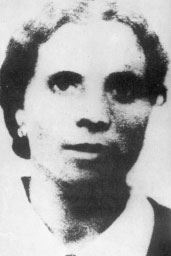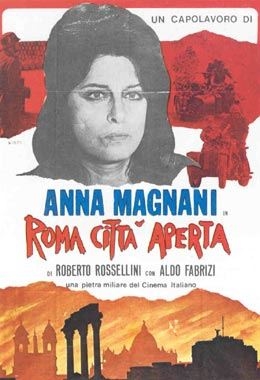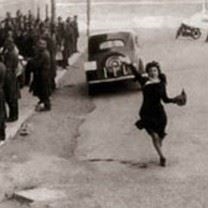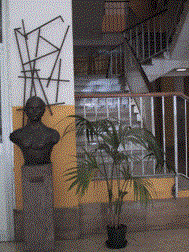 |
| Teresa Gullace Talotta (photo taken from ANPI) |
Teresa Gullace Talotta was born in Cittanova, Calabria, in the south of Italy, on 8th of September 1907. In the ‘30s she moved to Rome where she lived with her husband Girolamo and their five sons.
On the 26th February of 1944 during a SS searching, her husband was caught and taken to a barrack in the centre of Rome (Viale Giulio Cesare). Even though she was expecting the sixth son, Teresa went to the prison every day in an attempt to see Girolamo and give him a hunk of bread, some cigarettes, a clean shirt.
On the 3rd of March, there was a great crowd outside the barrack because in the previous days hundreds of men had been arrested during Nazi mopping up operations. Teresa elbowed her way to the front row and saw her husband clinging to the window bars. Holding a bundle in her hands, she crossed the street going towards the barrack though a Nazi soldier ordered her to stop and levelled his gun at her. Teresa tried to explain to him that she just wanted to throw the bundle to her husband but the soldier was unmoved. Teresa started to shout her anger and contempt against that man who did not feel pity for a helpless woman. Maybe an unexpected movement or a misunderstanding, a sudden reaction of the soldier, a shot fired from his Luger, then the tragedy.
Laura Lombardo Radice, a partisan witness, saw Teresa die without a cry, fall on the ground with a line of blood dripping from her mouth, her eyes open wide. She was 37 years old. For a second everything remained motionless but it was only a moment. A scream of pain and cries of indignation rose among the crowd. While her dead body was taken away, thousands of women gathered around the place where Teresa had been brutally murdered in order to protect it. They knelt, invoked prayers, spontaneously covered the blood stains still on the ground with bunches of flowers.
Teresa’s violent death caused such a sensation in the whole city that the soldiers had to release Girolamo in a few weeks. For the partisans Teresa became a martyr to the Resistance, a woman who rebelled against fascism that broke up families deporting men or making them enlist and reducing women in a condition of extreme poverty, hunger and degradation.
 |
| Film poster “Roma città aperta” |
The famous film director Roberto Rossellini drew inspiration from this heroine for the role interpreted by Anna Magnani in “Roma città aperta”.
 |
| Anna Magnani in “Roma città aperta” |
The burst of the machine gun fire of the German soldier that puts an end to the desperate run of the woman looking for the truck where her husband is, can be considered one of the most famous scenes of Italian cinema, symbol of the love, of the sacrifice, of the generosity of this woman.
 |
| Bust of Teresa Gullace by Ugo Attardi (Photo by N. Marta) |
The figure and the story of Teresa Gullace were celebrated by the Italian President Giovanni Leone, who gave her family a gold Medal for civil merit in 1977.
In 1995, Teresa Gullace was chosen to represent in a commemorative stamp “the women of the II World War” 50 years after the end of the conflict. In Viale Giulio Cesare, where Teresa was killed, there is a plaque in her memory.
In 1981 our secondary school, located in Cinecittà Est, a suburb of Rome, was dedicated to her memory and Ugo Attardi, a famous sculptor, made a bust of Teresa that has been located in the hall of the school.We shall NEVER forget her sacrifice.
Page created on 11/7/2008 9:52:14 AM
Last edited 11/7/2008 9:52:14 AM
